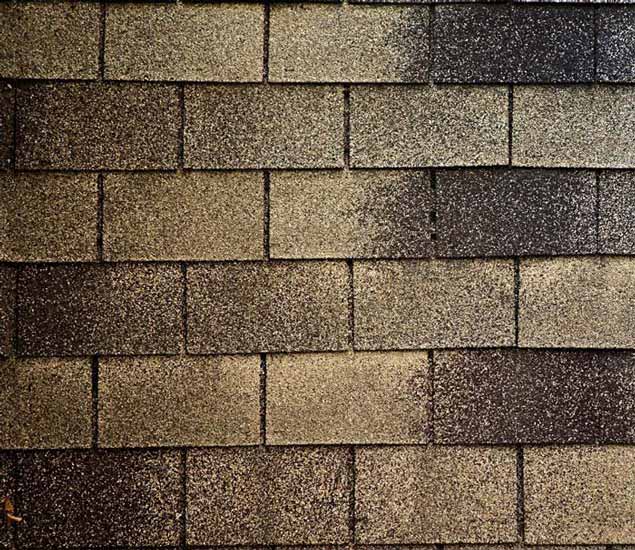What to Know About Granule Loss and Your Roof

Residential roofing systems are complex components that play a critical role in the protection of your home against the elements. A roof that falls into disrepair is cause for concern, and you need to be aware of the many ways that a roof can show signs of wear so you can provide proper care and maintenance over time.
Most residential roofing systems feature asphalt shingles with a rough surface. This rough surface is not the shingles themselves, but the granules that go on the shingles during the manufacturing process.
Do not make the mistake of thinking that granules only serve as a cosmetic element in your roofing system. Granules are critical to the overall performance of your roof, and they can help gauge the health of your roofing system over time.
What Are Granules?
Granules are mineral particles that go on the surface of an asphalt shingle. The primary purpose of granules is to protect the asphalt beneath against exposure to the sun.
Roofing materials are in direct sunlight for the entirety of their lives. UV rays can wreak havoc on bare asphalt shingles, causing them to crack, curl, or deteriorate. The granules help to reflect the harmful rays of the sun so that shingles can enjoy a longer and more productive life.
Why Does Granule Loss Occur?
You often see slight granule loss as your roof ages. The adhesive holding the granules in place loses its efficacy as it ages. Your roof also has exposure to wind and water over time, which can contribute to loosening and lost granules from individual shingles.
Normal granule loss is nothing to be afraid of, but premature granule loss is a cause for concern. Extreme weather is the most common culprit behind premature granule loss. Hailstones can knock granules loose. High wind speeds can blow granules free from your shingles.
When granules are gone after an extreme weather episode, your shingles do not have the protection they need to remain intact.
How Can You Identify Granule Loss?
Fortunately, spotting granule loss can be simple. You have no need to climb up on your roof to inspect shingles for signs of granule loss. You can complete a quick visual inspection from the ground by checking the continuity of your roof color.
Dark spots are cause for concern. The dark areas are likely sections of your roof where the granules are gone. As the underlying asphalt begins to show through, the roof will appear darker in areas with significant granule loss.
You can also check for granule loss by looking in your rain gutters or near the drainage points of your downspouts. Any lost granules will wash into your roof’s drainage system and become visible in gutters and downspout drains. If you see more granules than usual in these locations, this is a good indication that your roof suffers from granule loss.
What Can You Do About Granule Loss?
If you suspect that your shingles shed granules prematurely, take immediate action. You can often correct localized granule loss by removing the affected shingles and installing new ones.
If the granule loss is more widespread, then consider installing a new roofing system. An experienced roofing contractor will be able to assess the condition of your roof to determine if repair or replacement is the answer to your granule loss woes.
Do not let granule loss compromise the quality and performance of your roofing system. Contact A-1 Roofing Inc. to discuss your options as soon as you see evidence of granule loss on your roof. We will happily answer your questions and visit your home to investigate.
